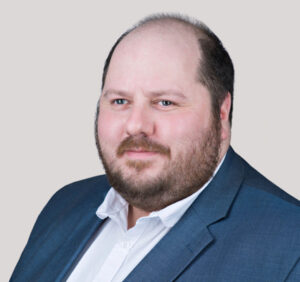02/02/2023
Background
Mitsubishi Denki’s European Patent application 14882049.1 relates to a Hierarchical Neural Network Device and is based on International Application WO2015118686A1. The application is the subject of the EPO’s Technical Board of Appeal decision T0702/20 to refuse the application due to a lack of inventive step.
The application has been allowed in other jurisdictions. During the International Phase, WO2015118686A1 had been searched by the JPO with only background prior art cited against the claims, and the application had gone on to be examined in other jurisdictions, with patents granted in Japan, Korea and the United States.
At the EPO, the extended European search report revealed two journal papers considered by the EPO to be more relevant than the earlier art. During examination at the EPO, it was agreed that the claimed subject matter was novel over the prior art, but the claims were ultimately refused by failing to provide a technical solution to a problem in a technical field. The case illustrates the difficulty applicants faces for applications relating to developments in core AI technologies, drafted outside of the Europe.
Objections from the Appeal Board
In the decision, the EPO and the appellant agreed that the difference between the claimed invention and the closest prior art (D1) included the claimed requirement to connect the different layers of the neural network in accordance with “a sparse parity check matrix of an error correcting code”. The Board stated “Unlike the prior art, the connections are established prior to the training, independently of the learning data according to the check matrix of an error correcting code”; “this addressed the overfitting problem – that is a classifier that learns the training data too well and is not able to generalise”.

However, although the Appeal Board found that the claimed neural network apparatus had “a new and non-obvious structure”, they held that it still “only defines a class of ‘mathematical functions’, which, as such, is excluded matter” under Article 52 of the EPC. Specifically, the relevant features of the claim were held not to “serve a technical purpose”, nor be “related to a specific technical implementation” because “they merely pertain to the initial, fixed structural definition of an abstract mathematical neural network-like model with unknown, possibly abstract data inputs and outputs by means of a binary-valued matrix prior to the model’s further simulation and manipulation by means of a computer”. As for other “non-technical” matter in the claim, it could only be considered for the assessment of inventive step when used to solve a technical problem.
Appellant’s Arguments
The Applicant had argued during examination and on Appeal, that “the system was implemented by a computer, so a specific technical implementation was present” and was more than “a mere mathematical method” for several reasons, including: a) providing an improvement in machine learning techniques, thereby “solving a direct technical problem by mathematical means”, b) producing an improved effect within the computer (the sparse connections of the neural network reducing computer storage requirements), and c) outside of the computer providing a useful “technical” tool for automating human tasks. In presenting these arguments, they sought to rely on decisions such as T 1326/06, T697/17 and G1/19.
The EPO Enlarged Board’s Decision G1/19 is concerned with the patentability of a computer implemented simulations, and more generally the EPO’s approach to abstract inventions implemented in computer software. G1/19 (as reported here) confirmed that the correct approach when assessing patentability of computer implemented inventions is set out in the COMVIK decision (T641/00), and that the approach requires first the identification of a technical character in the claimed subject matter and second the identification of a technical problem solved by the claim. Software itself is by default considered to have a technical character, but aspects of the software that belong to an excluded field (e.g. business method considerations, or mathematical methods (algorithms) as such) cannot contribute towards the solution of the technical problem, nor the inventiveness of the claimed subject matter.
The applicant had relied on T1326/06 to argue that “that methods relating to data encoding and/or decoding can serve a technical purpose even though they are almost entirely based on mathematical algorithms and used for encrypting and decoding abstract data“. Further, based on T697/17, they had argued the Appeal Board had generally observed that “describing a technical feature at a high level of abstraction does not necessarily take away the feature’s technical character“. The Appellant argued that “By analogy, the possibility that the neural network apparatus may process unknown, possibly abstract data inputs and outputs (like the relational database in T697/17) should not necessarily take away the technical character of the distinguishing feature“. The Appeal Board agreed with the comments in these decisions, but distinguished their application from the subject matter of the present case.
Decision T697/17 was concerned with SQL extensions for a relational database, and had ultimately been found to contain patentable subject matter. In T697/17 the Board argued that “While a database system is used to store non-technical information and database design usually involves information-modelling aspects which do not contribute to solving a technical problem, the implementation of a database management system involves technical considerations. Therefore, a database management system is not a computer program as such but rather a technical system”. Section 5 of the decision considered the reality that some aspects of programming may be considered “technical” while others may be considered “not technical”. In this regard, the Board identified the claimed SQL extension features as relating to technical considerations, because abstract considerations embodied in programming had been directly applied to the workings of a computer to make the data storage offered by the computer operate more effectively, and thus an implied technical problem had been solved .
In contrast, and counter to the applicant’s arguments, the improved neural network claimed by the applicant did not directly affect the underlying computer (any smaller neural network would also reduce storage requirements). Nor did it affect a system outside of the computer, and as a result, it could be only regarded as improvement limited to the algorithm or mathematical method itself. The board noted (emphasis added) that:
“the claimed learning and use of the network ‘to solve a classification problem or a regression problem’ (where classification is merely regression with discrete outputs corresponding to the classes), can use any data. The outputs of the neural network do not have therefore any implied “further technical use“; they may, for instance, be related to forecasting stock market evolution. In cryptography, the example provided by the Appellant, the situation is different: the encryption of digital messages was found to address the technical problem of increasing system security by preventing data access to parties not in possession of the decryption key (T 1326/06 reasons 6 and 7)”.
This type of objection therefore mirrored the objection in G1/19 in which any possible usefulness of the “pedestrian simulation” outside of the computer (such as to improve the safety or efficiency of the design of public spaces) was considered insufficient for patentability, since that usefulness was not directly evident from the claim wording, and in the absence of any limitation, the claim language could equally apply to excluded applications such as simulations applied to online role playing games.
Summary
Patentable inventions at the EPO must solve a technical problem. For software inventions, and those in the field of Artificial Intelligence, this requirement can be challenging since computer programs and mathematical methods “as such”, are specifically excluded from patentability. Identifying a technical problem, therefor involves a careful consideration of what the claimed invention has contributed, and a consideration of whether this contribution is technical or not using the approach set out in COMVIK T641/00.
Software inventions are usually considered to solve a technical problem if they result in the better operation of a connected piece of equipment, a network, or the computer itself. But for core AI inventions, often there is no explicit control resulting from the invention, since the invention simply results in a better AI. In connection with this scenario, the guidelines of the EPO at Section G-II,3.3 and 3.3.1 note:
A mathematical method may contribute to the technical character of an invention, i.e. contribute to producing a technical effect that serves a technical purpose, by its application to a field of technology and/or by being adapted to a specific technical implementation (T 2330/13). “A mathematical method may also contribute to the technical character of the invention independently of any technical application when the claim is directed to a specific technical implementation of the mathematical method and the mathematical method is particularly adapted for that implementation in that its design is motivated by technical considerations of the internal functioning of the computer system or network (T 1358/09, G 1/19). This may happen if the mathematical method is designed to exploit particular technical properties of the technical system on which it is implemented to bring about a technical effect such as efficient use of computer storage capacity or network bandwidth.”
For patentability, applicants should therefore consider at the drafting stage of the application indicating how the claimed neural network or mathematical method is “adapted to a specific technical implementation” (such as by directly relating to image processing, speech recognition, control outputs for vehicles or other machines including robotics, a security encryption) or “by being motivated by the technical considerations of the internal functioning of the computer system or network”. The implementation and motivation will ideally need to be specifically discussed in the description of the patent application, since without such description, and without reference to direct application of the mathematical method to a specific problem, the claimed mathematical method is liable to be refused on the grounds that it is merely a better algorithm. More comments are included in our earlier article here.
If you would like to discuss any aspects of this note, or discuss how you should approach drafting applications in this area, please contact marketing.
This article is for general information only. Its content is not a statement of the law on any subject and does not constitute advice. Please contact Reddie & Grose LLP for advice before taking any action in reliance on it.



